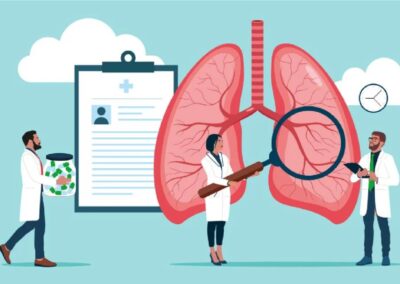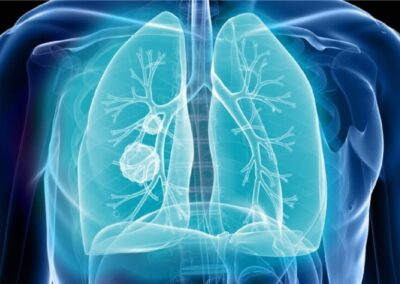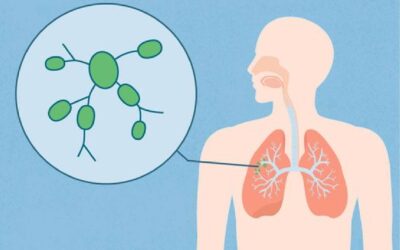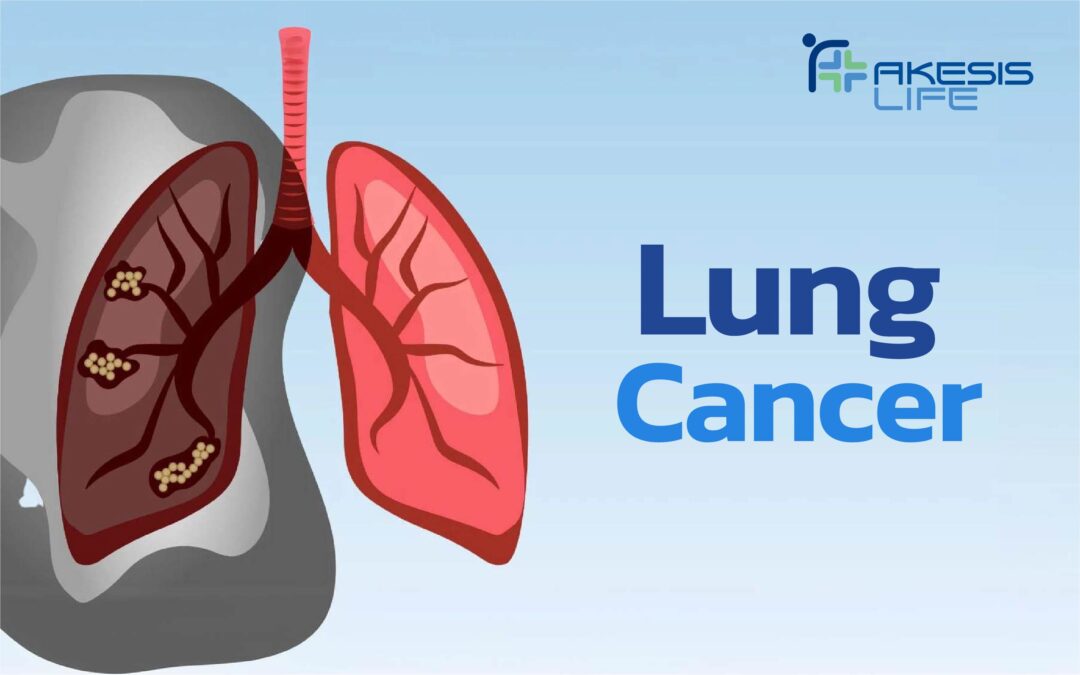Lung cancer is one of the leading causes of cancer-related deaths worldwide. Approximately 85% of cases are caused by smoking. Diagnosis is often delayed because patients may not recognize early symptoms, allowing the disease to progress to an advanced stage before detection, making treatment more difficult. Early screening in high-risk individuals can lead to earlier diagnosis and more effective treatment.
Types of Lung Cancer
The two most common types of lung cancer are:
- Small Cell Lung Cancer (SCLC)
- Non-Small Cell Lung Cancer (NSCLC)
NSCLC is more common and tends to spread more slowly than SCLC, which is less common but more aggressive and spreads more rapidly.

Symptoms of Lung Cancer
Most symptoms are related to lung function. Common signs include:
- Chronic cough, with or without sputum
- Chest pain
- Shortness of breath, wheezing, or difficulty breathing
- Coughing up blood
- Recurrent lung infections
- Loss of appetite, fatigue, unexplained weight loss

Risk Factors for Lung Cancer
- Smoking is the most significant risk factor. Smokers are about 20 times more likely to develop lung cancer than non-smokers.
- Air pollution such as smoke, secondhand smoke, chemical exposure, asbestos, heavy metals, and PM2.5 pollutants
- Family history of lung cancer
Diagnosis of Lung Cancer
- Low-Dose Helical Computed Tomography (LDCT)
- CT Scan (Computed Tomography)
- PET Scan (Positron Emission Tomography)
- Biopsy: A pathological examination that determines the cancer type

Staging of Lung Cancer
- Small Cell Lung Cancer (SCLC)
- Limited Stage: Cancer is confined to one lung and adjacent lymph nodes
- Extensive Stage: Cancer has spread beyond the chest or to other organs
- Non-Small Cell Lung Cancer (NSCLC)
- Stage 1: Tumor ≤ 5 cm, no lymph node involvement
- Stage 2: Tumor > 5 cm, with invasion of pleura or chest wall and/or spread to nearby lymph nodes
- Stage 3: Larger tumors invading adjacent structures, other lobes of the same lung, or distant lymph nodes (e.g., mediastinal, diaphragm, ribs)
- Stage 4: Metastasis to distant organs such as the pleura, liver, bones, adrenal glands, brain, or cervical lymph nodes

Treatment Options for Lung Cancer
- Surgery
- Radiotherapy
- Immunotherapy
- Chemotherapy
- Targeted Therapy
- Multimodal Treatment: A combination of different approaches tailored to the individual patient


